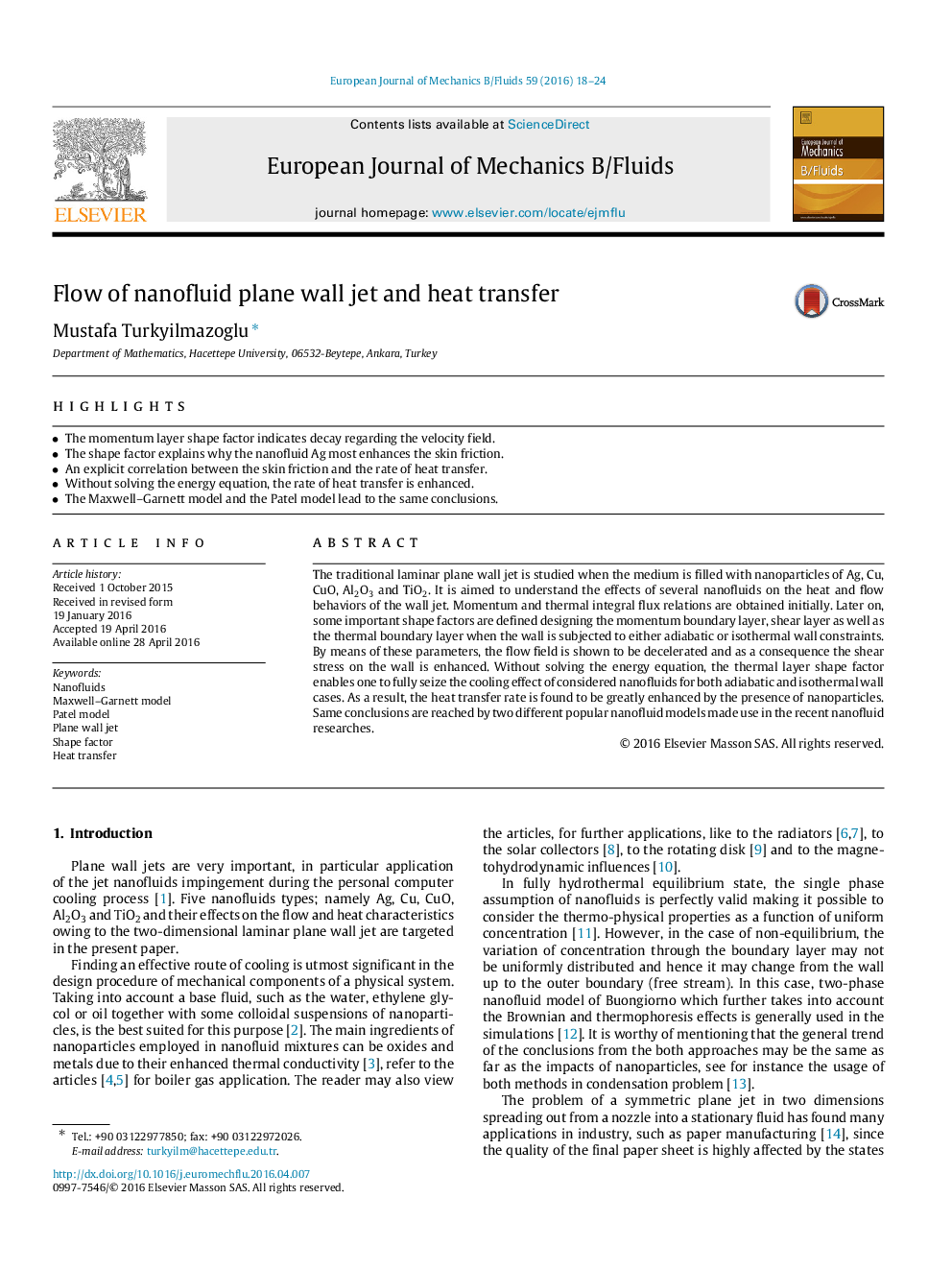| Article ID | Journal | Published Year | Pages | File Type |
|---|---|---|---|---|
| 650184 | European Journal of Mechanics - B/Fluids | 2016 | 7 Pages |
•The momentum layer shape factor indicates decay regarding the velocity field.•The shape factor explains why the nanofluid Ag most enhances the skin friction.•An explicit correlation between the skin friction and the rate of heat transfer.•Without solving the energy equation, the rate of heat transfer is enhanced.•The Maxwell–Garnett model and the Patel model lead to the same conclusions.
The traditional laminar plane wall jet is studied when the medium is filled with nanoparticles of Ag, Cu, CuO, Al2O3 and TiO2. It is aimed to understand the effects of several nanofluids on the heat and flow behaviors of the wall jet. Momentum and thermal integral flux relations are obtained initially. Later on, some important shape factors are defined designing the momentum boundary layer, shear layer as well as the thermal boundary layer when the wall is subjected to either adiabatic or isothermal wall constraints. By means of these parameters, the flow field is shown to be decelerated and as a consequence the shear stress on the wall is enhanced. Without solving the energy equation, the thermal layer shape factor enables one to fully seize the cooling effect of considered nanofluids for both adiabatic and isothermal wall cases. As a result, the heat transfer rate is found to be greatly enhanced by the presence of nanoparticles. Same conclusions are reached by two different popular nanofluid models made use in the recent nanofluid researches.
